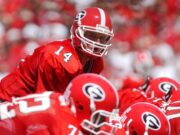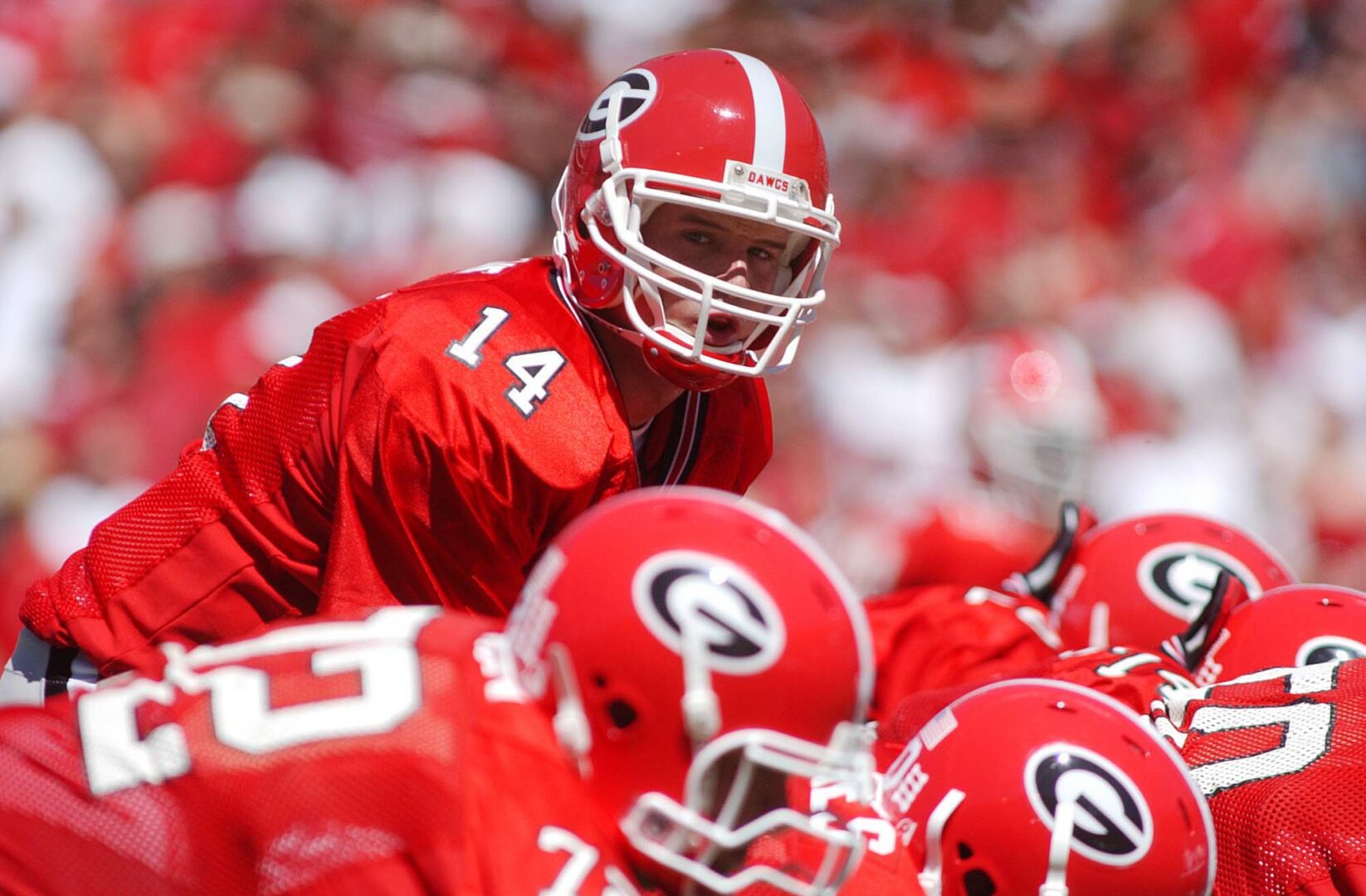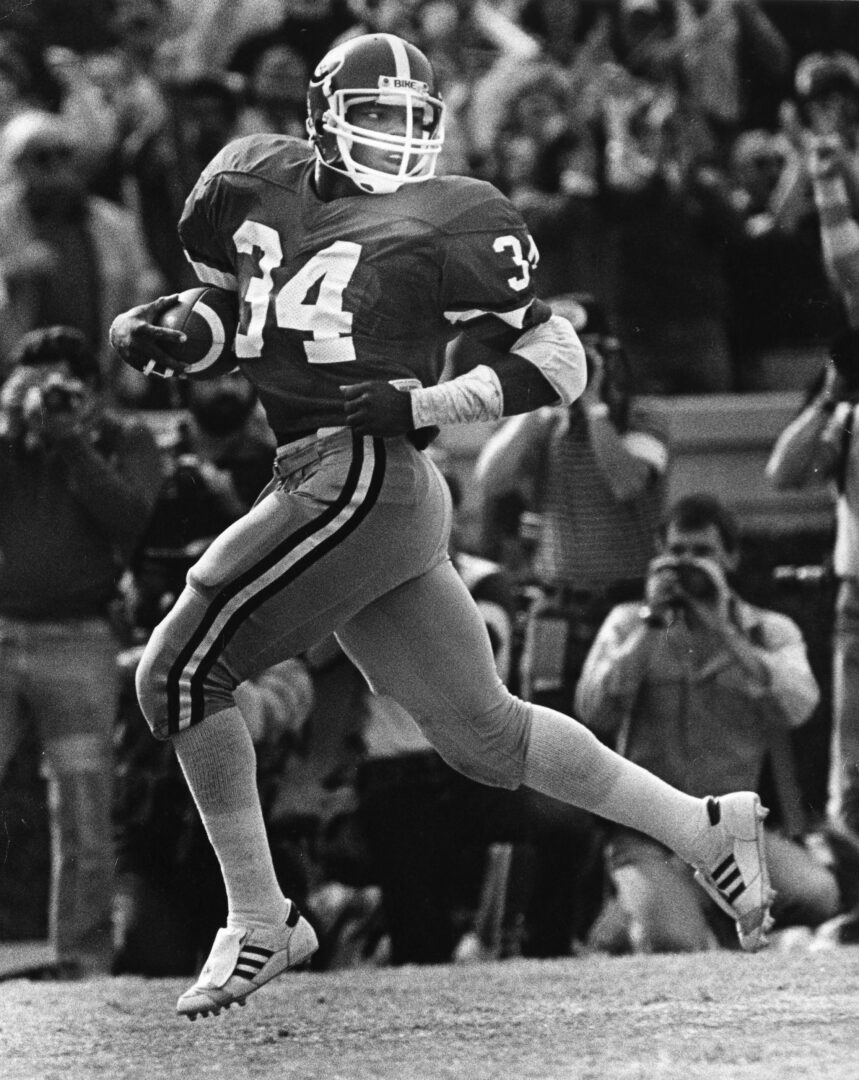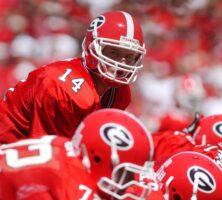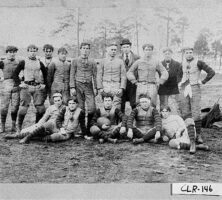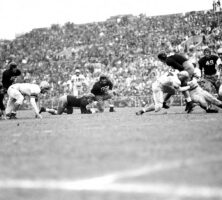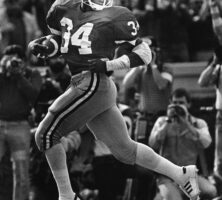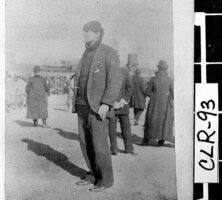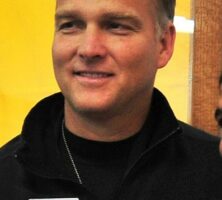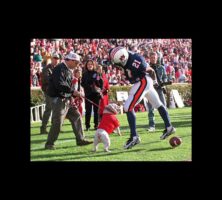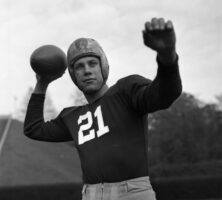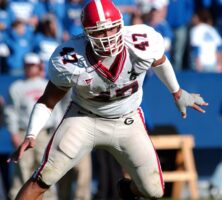The University of Georgia (UGA) has a highly successful football program, having won national championships as well as multiple conference titles and bowl games.
Georgia’s home field, Sanford Stadium, is named for educator Steadman V. Sanford and ranks among college football’s most famed venues. Games there are commonly said to be played “between the hedges,” a reference to the shrubbery that surrounds the playing field. Also frequently found at Sanford is Uga, the team’s live bulldog mascot (a more anthropomorphic “Hairy Dawg” leads fans in cheering at games).
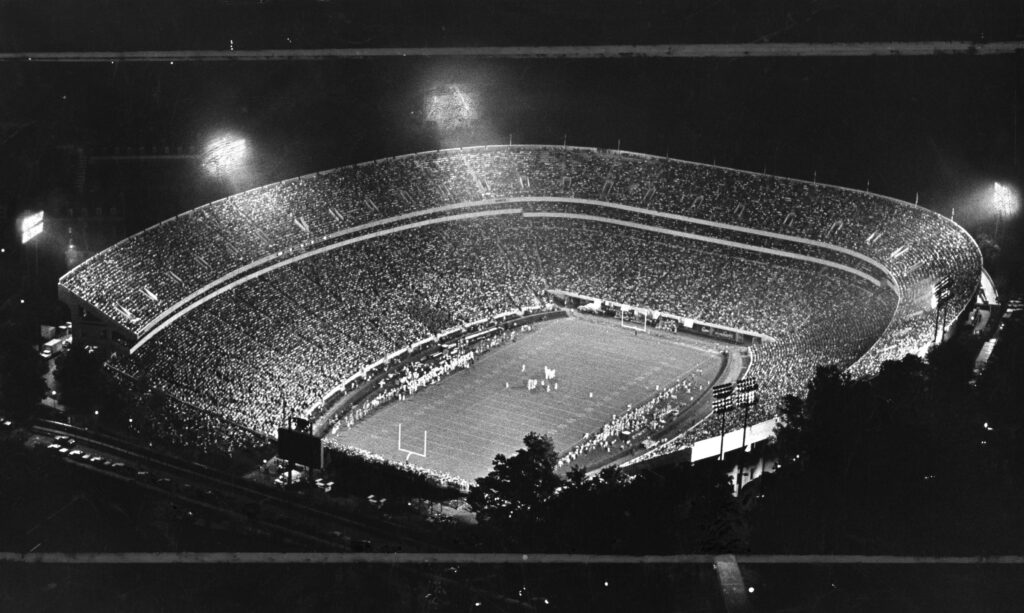
History
Georgia played its first football game on January 25, 1892, in Athens against Mercer University. Nearly a month later, on February 20, UGA journeyed to Atlanta to play Auburn University’s team, from Auburn, Alabama. It was the first game of what has become the Deep South’s oldest college football rivalry, and many of the sport’s historians consider February 20, 1892, to be the birth date of college football in the Deep South. As many as six Bulldogs teams have been considered national champions, winning titles in 1927, 1942, 1946, 1968, 1980, 2021, and 2022.
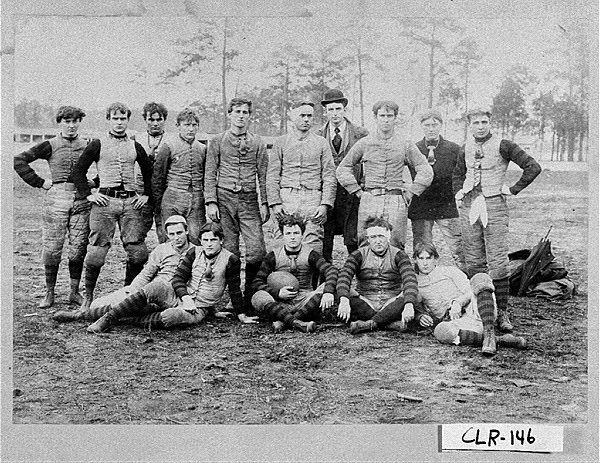
In 1927 Georgia started the season 9-0 before losing in Athens to the Georgia Institute of Technology, UGA’s archrival. Despite the loss, the Bulldogs were voted national champions in two recognized polls. The 1942 squad, led by Heisman Trophy–winner Frank Sinkwich and all-American end George Poschner, is heralded as the best in the first half-century of Georgia football. The team won eleven games and defeated the University of California at Los Angeles in the Rose Bowl to win the national title. After several players from that team left school to serve in World War II (1941-45), many of them, including halfback Charley Trippi, returned in 1946 to win another national championship. UGA finished the season with a perfect record and beat the University of North Carolina in the Sugar Bowl. The 1968 Bulldogs went 8-0-2 in the regular season and again went to the Sugar Bowl. Despite losing the bowl game to the University of Arkansas, Georgia was still voted number one in the final Litkenhous poll.
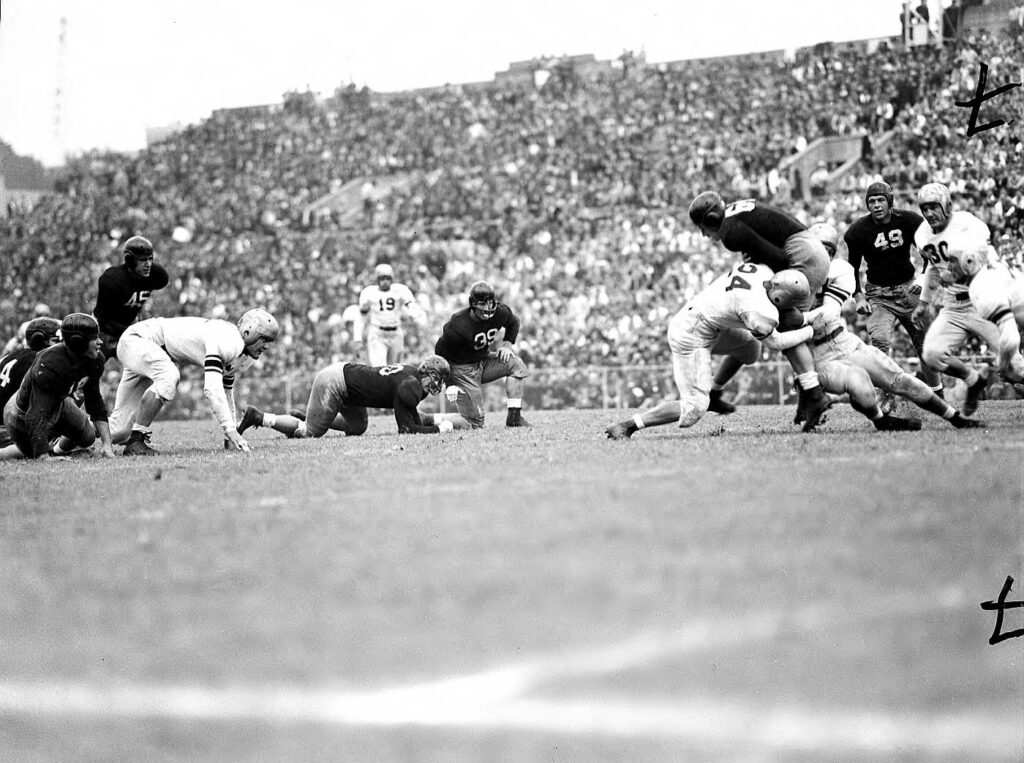
The 1980 UGA team is considered one of the most dominant in school history despite having been largely ignored in the preseason polls. Led by freshman sensation Herschel Walker, the Bulldogs went undefeated and beat Notre Dame in the Sugar Bowl. Virtually every poll ranked the Bulldogs first at the end of the season, and UGA won its first undisputed national championship among the major polls.
The legendary Vince Dooley, probably the best-known UGA coach, served as head football coach from 1964 until 1988. In 1979 he also became athletic director, a position he held for the next twenty-five years. Dooley led the Bulldogs to six SEC championships, most memorably in three consecutive championships during the early 1980s.
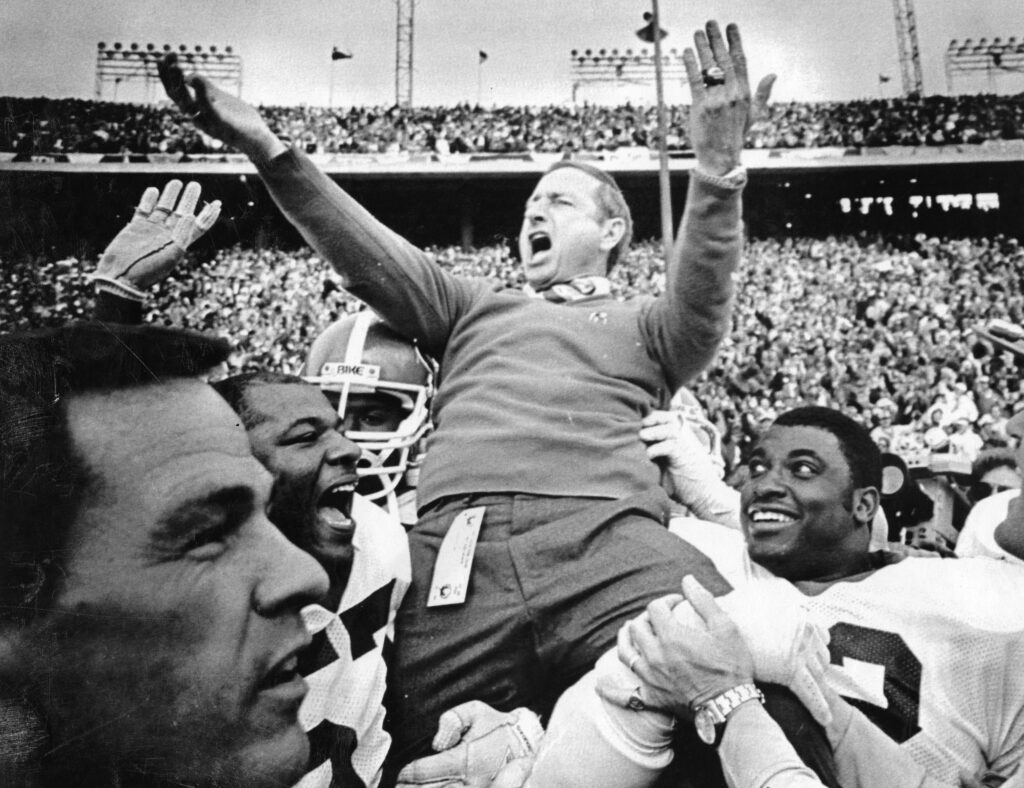
On December 26, 2000, Mark Richt was named the twenty-fifth head coach in Georgia’s history. In his first four seasons Richt amassed a 42-10 record, winning two SEC Eastern Division titles and one SEC championship. The 2002 UGA team, which finished 13-1, won the school’s first SEC championship in twenty years before beating Florida State University in the Sugar Bowl. Richt led the Bulldogs for fifteen seasons, amassing a 145-51 record, two SEC championship berths, and nine bowl wins.
In 2015 Richt was fired after losing essential games to Alabama, Florida, and Tennessee. Alabama defensive coordinator Kirby Smart was named the new head coach in December 2015.
The team’s fortunes improved upon Smart’s arrival, but hopes that the team would gain its first national title since 1980 were dashed by a three-point loss to the Alabama Crimson Tide in the championship game in 2018. Georgia played Alabama again in the championship game in January 2022, but this time won decisively and ended a forty-one year wait in holding the title of National Champions. The team went undefeated the following season and won the January 2023 national championship game against Texas Christian University.
Notable Players
Frank Sinkwich played at Georgia from 1940 to 1942, winning the Heisman in 1942. He later went on to be a first-round draft pick of the NFL’s Detroit Lions.
Fran Tarkenton played as quarterback at UGA from 1958 to 1960. He was later inducted into the Pro Football Hall of Fame after revolutionizing the quarterback position; he was one of the first NFL quarterbacks who could run or throw the ball on the move. He led the Minnesota Vikings to three Super Bowls.
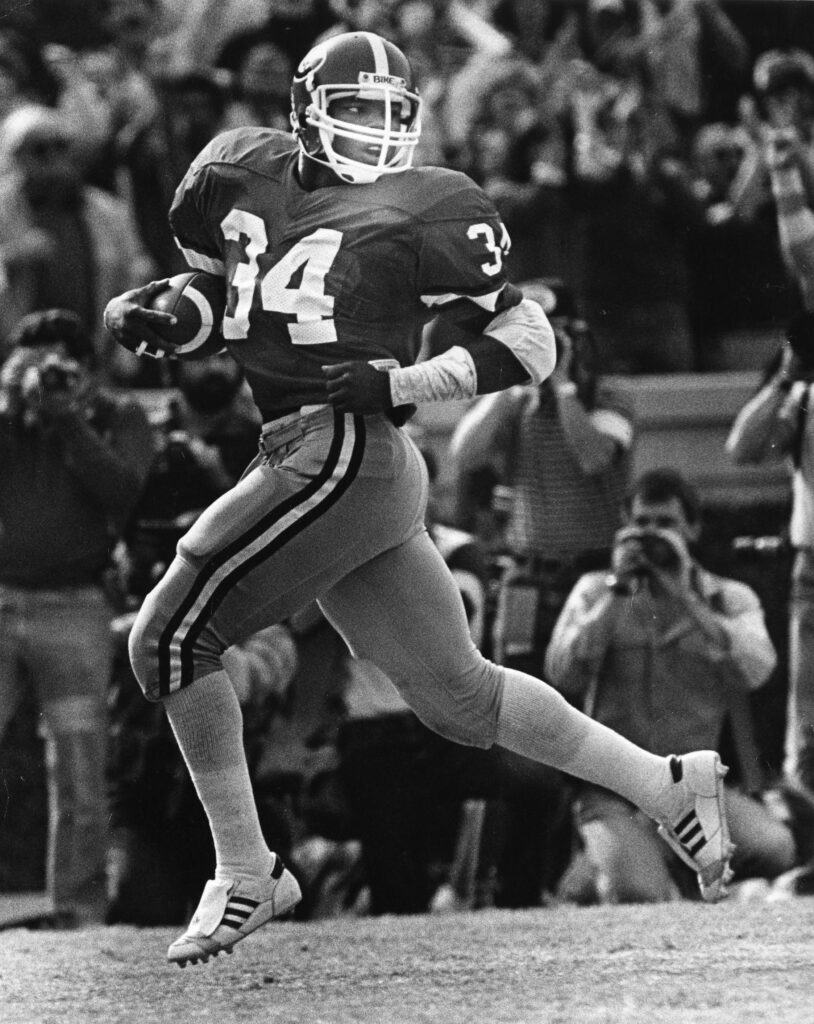
Herschel Walker, who played in Athens from 1980 to 1982, is one of the greatest players in college football history. He won the Heisman in 1982 after finishing second for the award in 1981 and third as a freshman in 1980. Walker first played professionally in the United States Football League (USFL) and set the all-time professional single-season rushing record. After the USFL folded and many of its players joined NFL squads, Walker went on to post an all-pro career with the Dallas Cowboys, Minnesota Vikings, Philadelphia Eagles, and New York Giants.
At least fourteen members of the College Football Hall of Fame played or coached at Georgia: coaches include Glenn “Pop” Warner (inducted in 1951), Dooley (1994), and Wally Butts (1997); players include Sinkwich (1954), Bob McWhorter (1954), Trippi (1959), Vernon “Catfish” Smith (1979), Bill Hartman (1984), Tarkenton (1987), Bill Stanfill (1998), Walker (1999), Terry Hoage (2000), Kevin Butler (2001), and John Rauch (2003).
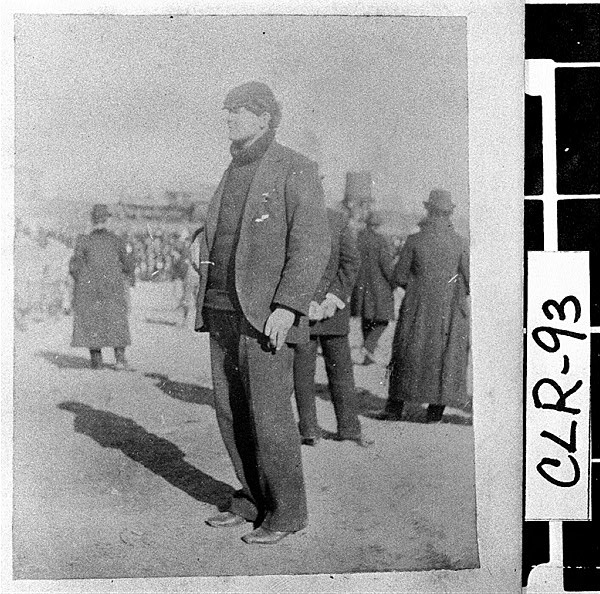
For a decade, Georgia earned a reputation for sending more running backs to the NFL than any other school in the nation. The list includes first- or second-round NFL draft picks Lars Tate (drafted in 1988), Tim Worley (1989), Rodney Hampton (1990), Garrison Hearst (1993), and Robert Edwards (1998), as well as sixth-round pick Terrell Davis (1995), who went on to lead the NFL in rushing and to receive Most Valuable Player honors in the 1998 Super Bowl.


